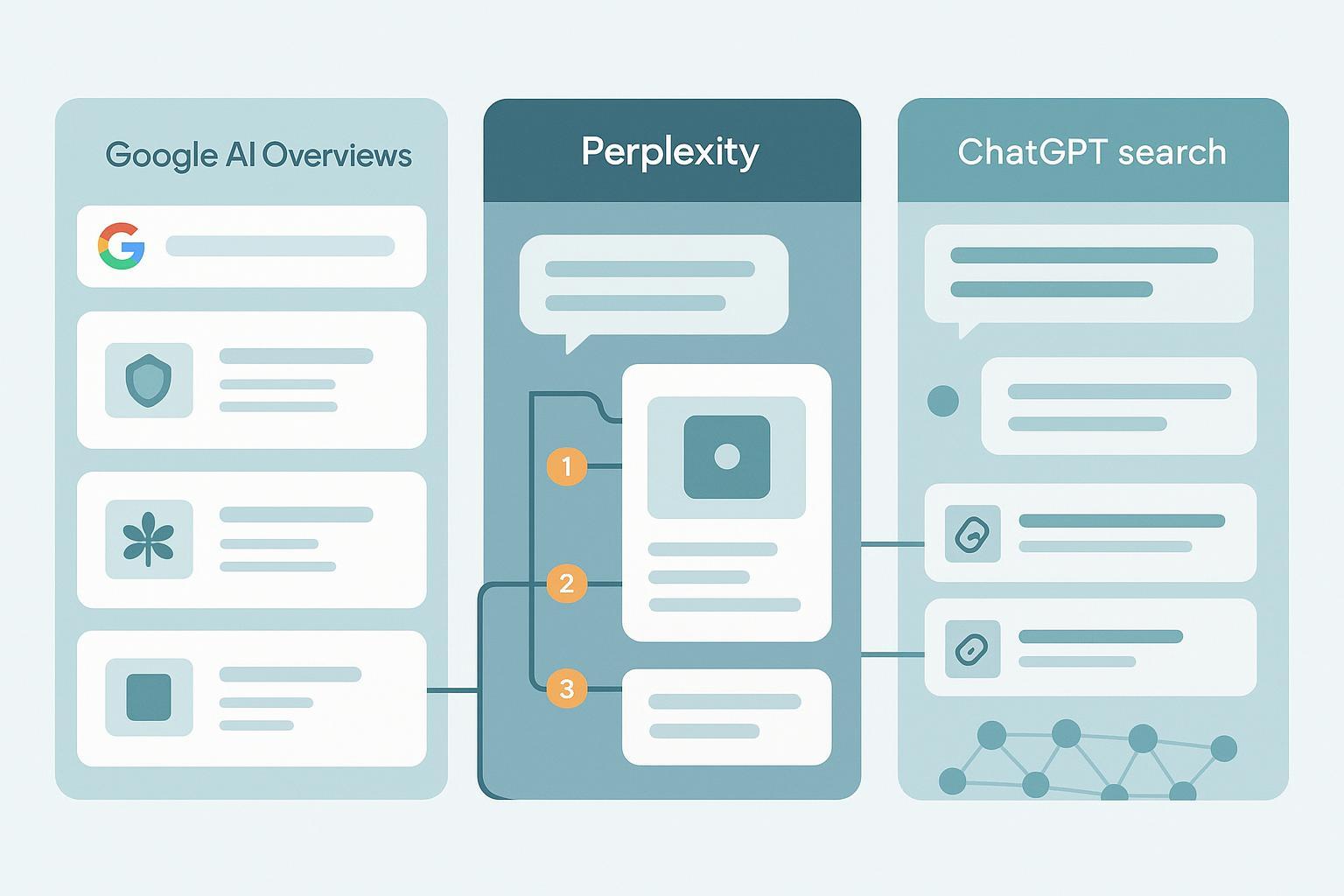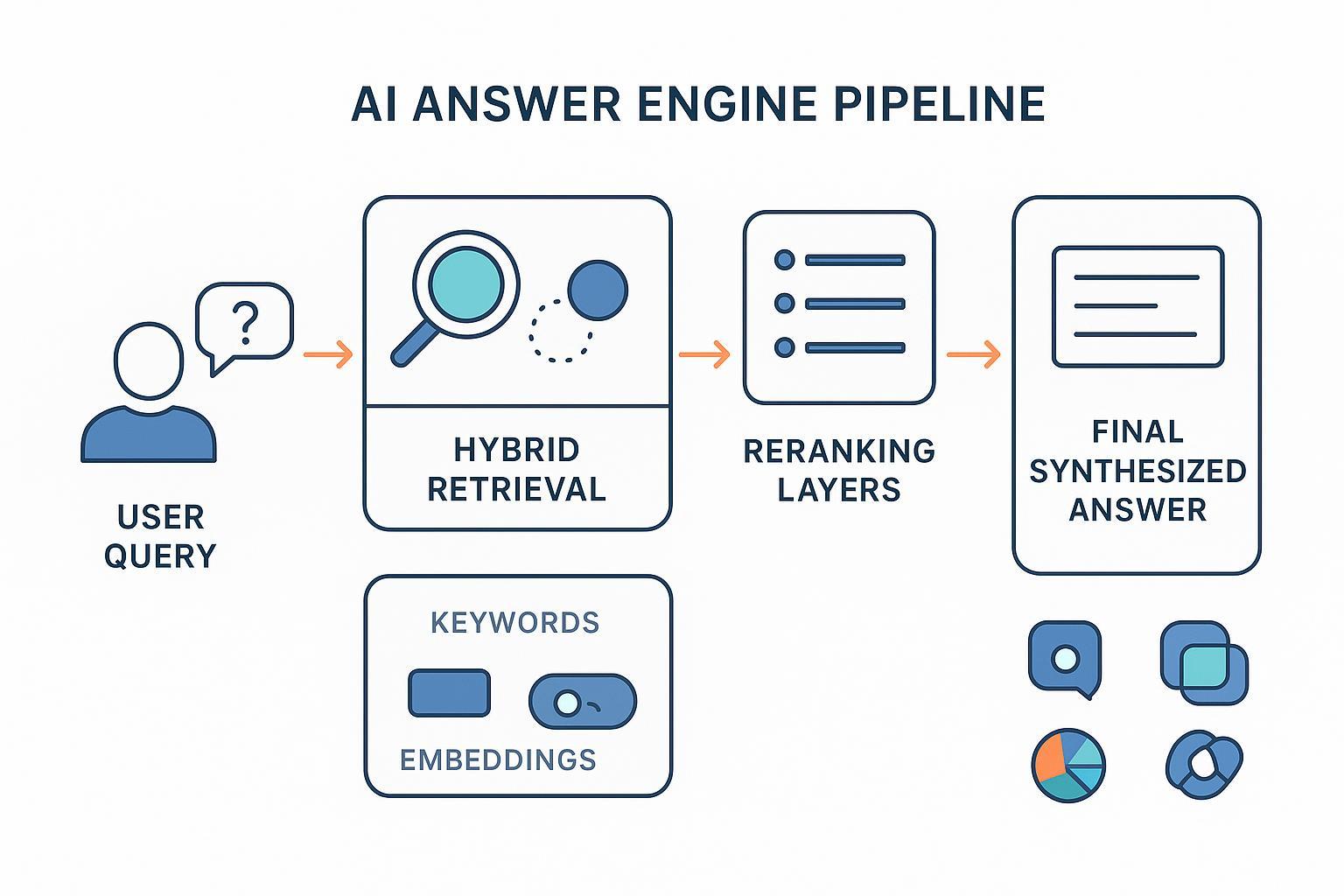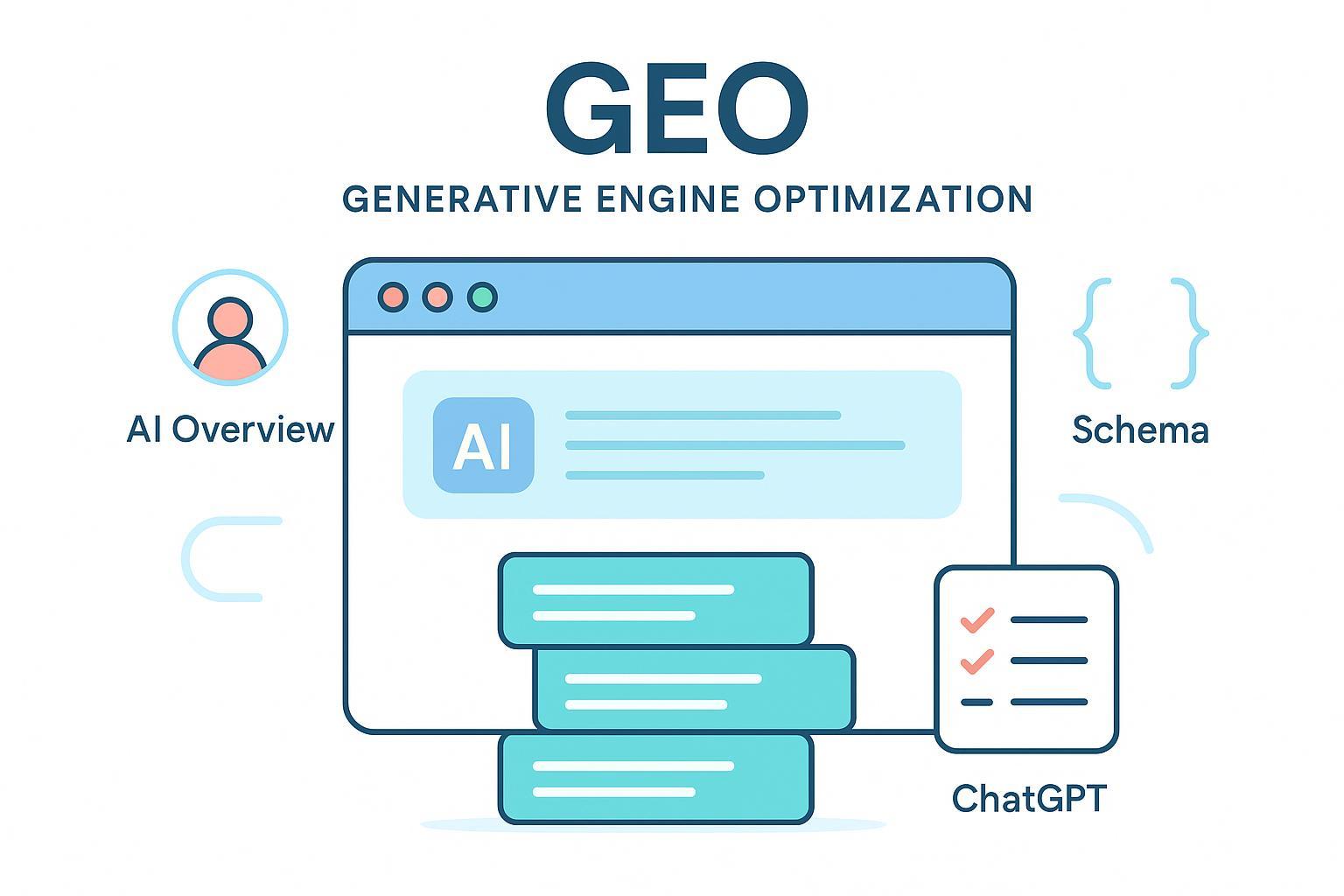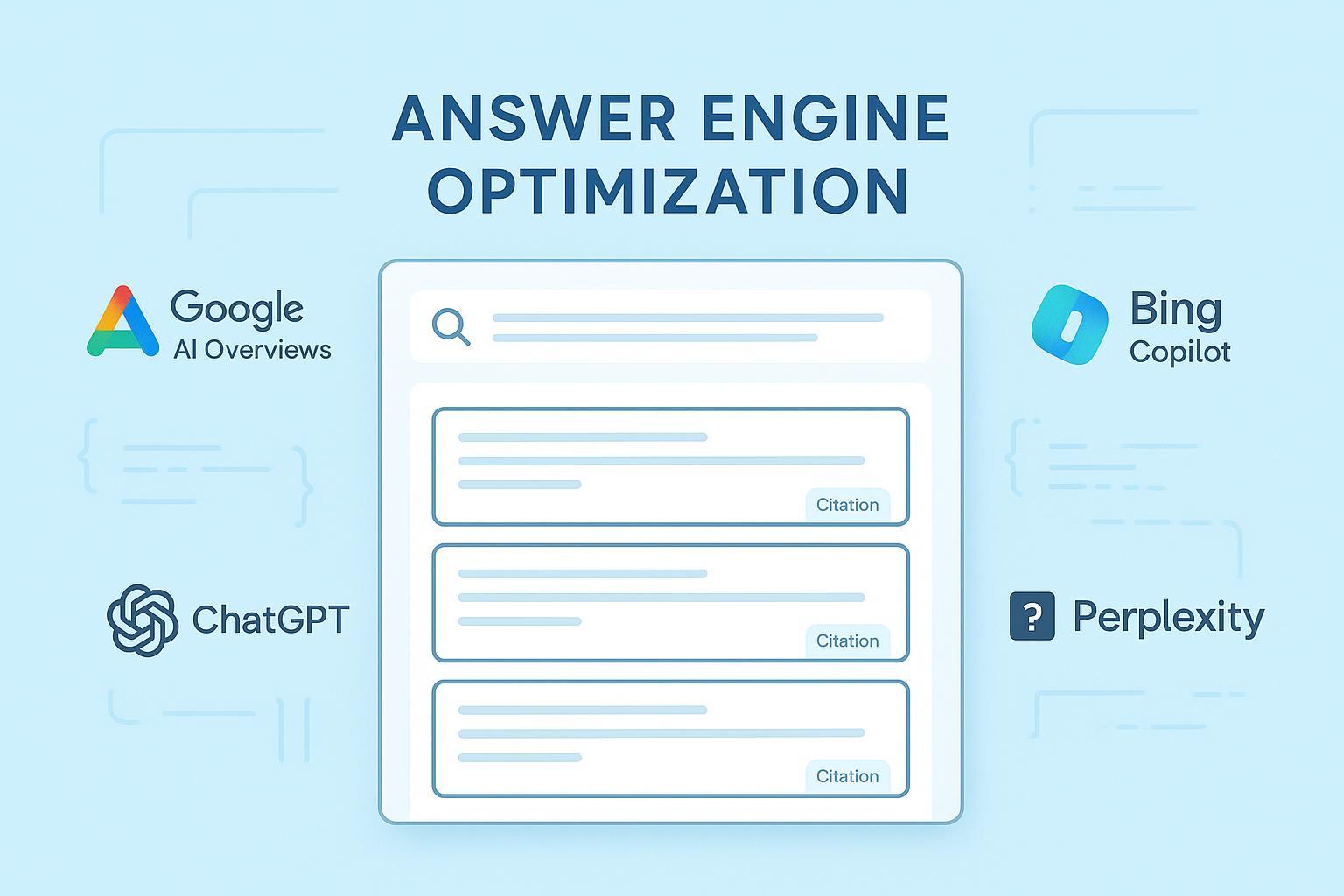Best Practices for Optimizing AI Overviews & Featured Snippets (2025)
Authoritative best practices for optimizing content and brand visibility in Google AI Overviews and featured snippets in 2025. Actionable workflows, technical tactics, and proven SEO strategies for advanced practitioners.

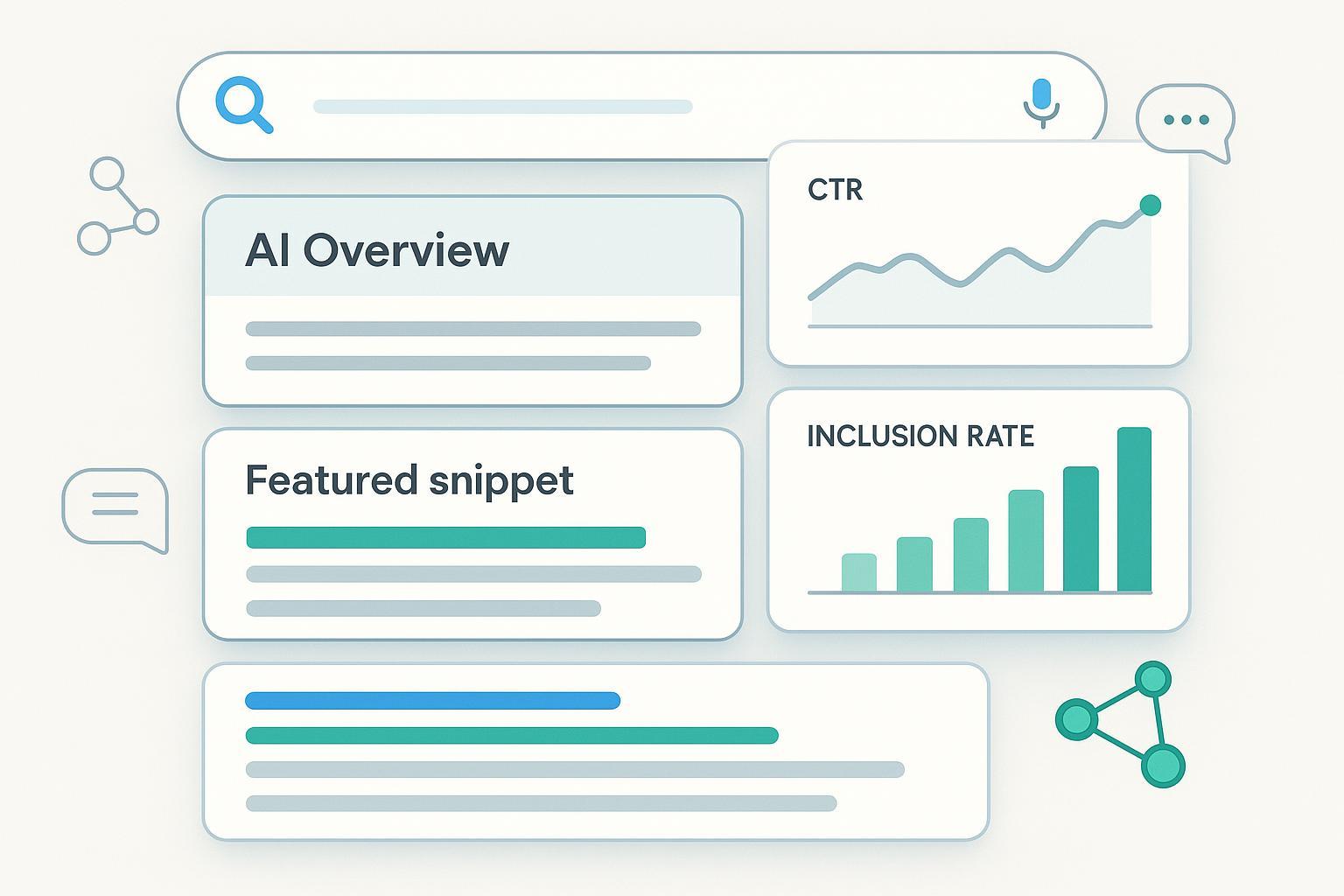
Why AI Overviews changed the SERP economics
If you feel your organic CTR eroding, you’re not imagining it. Multiple 2024–2025 cohort studies report meaningful shifts:
- Prevalence expanded quickly: Semrush found that AI Overviews triggered on 13.14% of queries in March 2025, up from 6.49% in January 2025, with informational intent dominating, per the Semrush 2025 AI Overviews study.
- CTR declines are material: Ahrefs observed a 34.5% year-over-year drop in position‑1 CTR for informational queries on AIO keywords (Mar 2024 vs Mar 2025), per Ahrefs’ 2025 analysis of AIOs reducing clicks.
- Zero‑click behavior persists: Across 2024 global cohorts, SparkToro reported that about 58.5% of U.S. Google searches and 59.7% in the EU result in zero‑clicks, according to the SparkToro 2024 zero‑click study.
- Global rollout accelerated: Google introduced AIOs in the U.S. on May 14, 2024, then expanded to 100+ countries and territories by late 2024, per Google’s May 2024 product blog and Search Engine Land’s Oct 2024 coverage.
The net result: for many informational queries, AI Overviews consume attention and push traditional blue links further down. Winning visibility now requires dual optimization—content that’s parsable and citable for AI summaries, and pages structured to capture featured snippets when they appear.
How AI Overviews select and cite sources (and what you can influence)
Mechanically, AI Overviews synthesize an answer and attribute citations inline and/or in adjacent panels. While you cannot “force” inclusion, you can increase your odds by meeting common selection patterns:
- Present concise, self‑contained facts that are easy to quote.
- Support claims with clear citations to authoritative references.
- Maintain semantic completeness at the chunk level (short sections that fully answer a sub‑question).
- Align entities and terminology consistently with the broader knowledge graph.
- Keep content fresh with visible update stamps and change logs.
Across engines, behaviors differ. SE Ranking’s 2025 comparative study reported higher duplicate‑domain citation rates in ChatGPT vs. more diverse citations in Bing Copilot and Perplexity; Google AIO toggles inclusion based on query intent and quality thresholds. Expect brand presence value (trust, accuracy, familiarity) even when referral traffic remains modest compared with traditional search.
Featured snippet optimization that works in 2025
Featured snippets are still algorithmically selected—no markup guarantees them. Google’s current guidance emphasizes relevance, clarity, and page quality. To win more snippets, refactor pages so the best answer is obvious and parsable.
Step‑by‑step workflow
-
Target the right opportunities
- Pull queries where you rank positions 2–10 and where featured snippets appear regularly. Prioritize informational queries without persistent AIOs or where AIOs are volatile.
- Cluster “People Also Ask” variants into on‑page Q&A sections.
-
Structure answers to match snippet types
- Paragraph snippets: Place a direct 40–60‑word answer immediately under a question‑form H2/H3. Keep tone neutral and declarative for definitions; procedural for “how to.”
- List snippets: Use clean ordered lists for steps and unordered lists for benefits; avoid burying steps inside long paragraphs.
- Table snippets: For comparisons/specs, include simple HTML tables; limit columns and rows to keep parsability high.
-
Use headers as questions and front‑load the answer
- For each subtopic, phrase the header as the primary query (“What is X?” “How to do Y?”) and lead with the concise answer before elaborating.
-
Add supporting details and sources
- Immediately follow your concise answer with elaboration, diagrams, or examples. Cite authoritative references inline when stating data, standards, or regulations.
-
Apply structured data appropriately
- Where eligible, use QAPage for single‑question, multiple‑answers layouts; confirm eligibility and implement carefully, referencing Google Search Central’s QAPage documentation (current as of 2025).
- Avoid relying on FAQPage for rich results outside government/health contexts; since 2023, FAQ rich results are restricted and inconsistent.
-
Reinforce EEAT and topical authority
- Add expert bylines, credentials, and an “About the author” box.
- Use contextual internal links to related, deeper resources. Build hub‑and‑cluster structures that fully cover a topic.
-
Maintain freshness and reduce cannibalization
- Consolidate overlapping pages; keep one definitive page per core query. Update with visible timestamps and change logs.
Example: QAPage JSON‑LD for an eligible Q&A page
{
"@context": "https://schema.org",
"@type": "QAPage",
"mainEntity": {
"@type": "Question",
"name": "What is semantic chunking in SEO?",
"text": "Semantic chunking is structuring content into self-contained sections that fully answer sub-questions.",
"acceptedAnswer": {
"@type": "Answer",
"text": "Semantic chunking organizes content into short, complete sections that address a single intent. Each chunk leads with a concise answer (≈40–60 words), followed by details, citations, and examples to improve parsability and snippet/AIO inclusion.",
"dateCreated": "2025-08-01"
}
}
}
Note: Always validate with Google’s Rich Results Test and ensure the visible content matches the structured data.
AI Overview inclusion tactics you can implement now
- Write in semantic chunks: Each section answers one sub‑question completely and concisely. Keep the quote‑worthy sentence near the top.
- Make citations easy to copy: Use descriptive anchors to authoritative sources (standards bodies, primary research, official documentation) when stating facts.
- Align entities: Use consistent names, definitions, and aliases. Include brief “About” sections for proprietary methodologies or products.
- Refresh regularly: Add last‑updated stamps; summarize changes in a small changelog so AIOs and users see recency.
- Test across engines: Monthly, ask Gemini/Copilot/Perplexity/ChatGPT the same questions and log inclusion/citation behaviors; adjust wording and chunk boundaries when you’re missing.
For official references on featured snippets, Google’s guidance remains the definitive source; see “Featured snippets and your website” on Google Search Central (updated 2025) for selection principles and opt‑out mechanics. And for AIO context and rollout timeline, review Google’s May 2024 introduction and Search Engine Land’s 2024 global expansion coverage.
Implementation plan: from audit to iteration
Follow this practical sequence to produce measurable gains.
- Opportunity mapping
- Pull keywords with positions 2–10 and check whether AIOs or featured snippets appear for each.
- Prioritize queries where snippets appear and AIO presence is intermittent or intent‑specific.
- Page refactor for snippet eligibility
- Add question‑form H2/H3 headings for target queries.
- Place a 40–60‑word direct answer immediately under each heading.
- Use lists/tables where appropriate so Google can easily parse structure.
- Add descriptive citations after the direct answer when making factual claims.
- Schema and technical hygiene
- Implement QAPage where eligible; otherwise rely on Article/Product schemas that match page purpose.
- Validate markup; fix accessibility, speed, and HTML cleanliness to reduce parsing errors.
- Entity and EEAT enhancements
- Add expert bylines, short bios, and institutional affiliations when applicable.
- Include internal links to your foundational explainer for newcomers—for example, a primer on Generative Engine Optimization (GEO)—to signal topical completeness without disrupting flow.
- Monitoring and iteration
- Track AIO presence, snippet wins/losses, and CTR via Google Search Console; annotate changes and recrawl dates.
- Compare competitor snippet formats; refresh your concise answers and structures when volatility increases.
- Run monthly multi‑engine prompt tests; log which engines cite you and for which questions.
Micro‑example: monitoring with a cross‑engine visibility tool
- After you’ve refactored pages, monitor how often your brand is cited across Google AIO, Perplexity, and ChatGPT. Tools like Geneo aggregate cross‑platform brand mentions, citation frequency, and sentiment; use historical logs to correlate content changes with inclusion shifts.
Disclosure: Geneo is our product.
KPIs and diagnostics you should track
- Featured snippet win rate: percentage of target queries where your page holds the snippet.
- Inclusion rate in AI Overviews: percent of tracked queries where your domain is cited in the AIO panel or inline links.
- CTR deltas: changes in Google Search Console CTR for pages after refactoring.
- Volatility index: frequency of snippet turnover and AIO presence for a keyword cluster.
- Recrawl cadence: time between updates and observed SERP changes; annotate to understand lag.
A practical benchmark: When AIO prevalence rises, expect CTR protection from snippet wins to be incremental, not absolute. The drop ranges reported by recent cohorts (e.g., the 34.5% decline in position‑1 CTR for AIO keywords from Ahrefs in 2025) set realistic expectations.
Risk mitigation and boundary conditions
- Don’t over‑invest in FAQPage for rich results unless you’re in government/health contexts; eligibility has been restricted since 2023.
- Avoid content cannibalization: consolidate overlapping pages; maintain one authoritative page per query.
- Combat hallucination/misattribution: state facts plainly, link to primary sources, include “myth vs fact” sections when useful, and offer a visible correction path.
- Be mindful of YMYL topics: add disclaimers, cite standards and official policies, and review updates frequently.
- Expect platform differences: Perplexity and Copilot may cite a broader set of sources than ChatGPT; Google AIO inclusion will vary with intent, freshness, and quality signals.
Common pitfalls to avoid
- Burying the answer under long introductions—front‑load the concise definition or steps.
- Using vague headers—phrase H2/H3 as the exact question you want to win.
- Neglecting markup validation—invalid or misaligned schema reduces parsability.
- Ignoring entity consistency—use the same names and definitions across pages.
- Treating updates as cosmetic—surface last‑updated dates and summarize changes to signal freshness.
Conclusion
AI Overviews have compressed attention at the top of the SERP, and featured snippets remain a defensible, high‑leverage asset—especially when AIOs are intermittent. The teams winning in 2025 are refactoring content into parsable, trustworthy chunks, validating schema, and iterating based on multi‑engine monitoring.
Ready to track your cross‑engine brand visibility and iterate faster? Explore Geneo to streamline monitoring and optimization.


